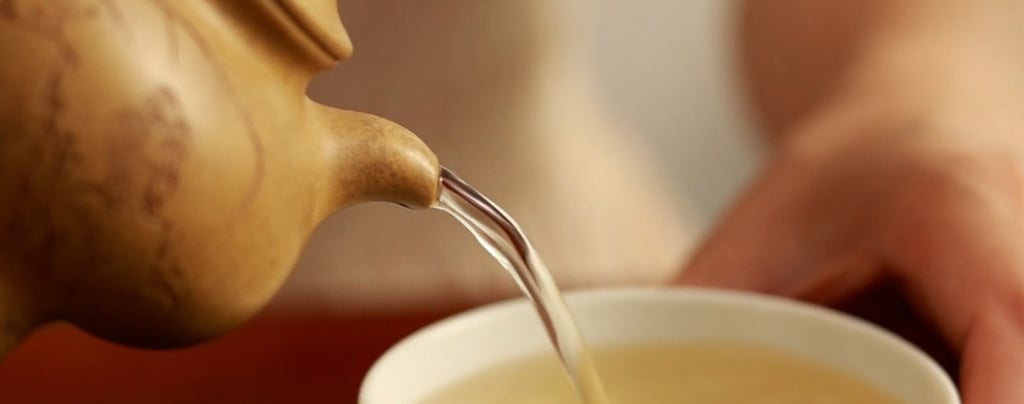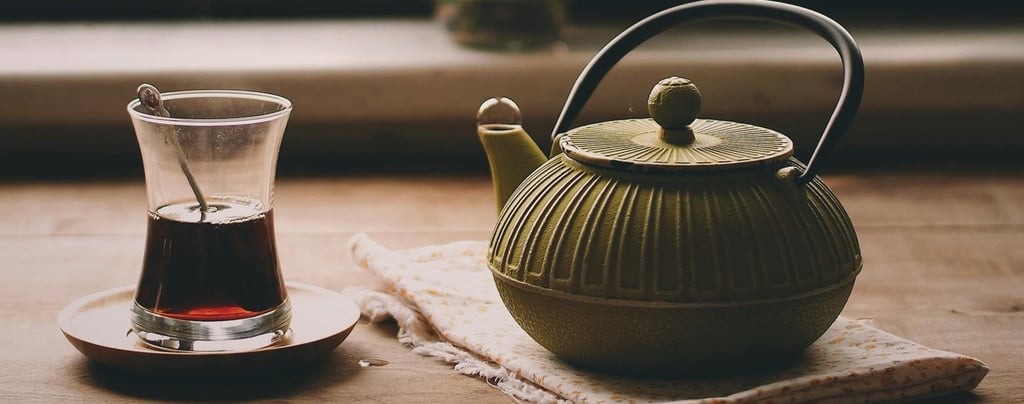How to Choose a High-Quality Teapot
Wondering how to pick the perfect teapot? From Yixing clay to porcelain, explore materials, craftsmanship, and design tips in this guide to choosing a high-quality teapot that elevates every tea moment.
TEA WARES GUIDE
So, What Makes a Teapot “High-Quality”?
Ever found yourself staring at a shelf of teapots, wondering which one’s actually worth your money? We’ve all been there. From fancy price tags to different shapes and materials, it’s easy to feel lost. And here’s the thing: picking the right high-quality teapot doesn’t just come down to looks or brand names. It’s all about what you need, how you’ll use it, and yes—the experience you’re after.
In this guide, we’ll break down what makes a teapot stand out, from materials to design and beyond. Ready to get smart about your next teapot purchase? Let’s dive in.
Why Bother with a High-Quality Teapot?
A quality teapot isn’t just for pouring tea—it’s about elevating the whole tea experience. Imagine a smooth pour, zero drips, and the ideal brew every time. That’s what you’re paying for. Here’s why a solid teapot matters:
Better Taste: A good teapot can make your tea taste smoother and more balanced.
Longevity: High-quality teapots are built to last. You won’t be back shopping for another anytime soon.
Brewing Performance: The right material and design keep your tea at the ideal temperature, letting the flavour shine.
Quality teapots are an investment in your daily ritual, a small way to treat yourself.
Material & Craftsmanship: Why It Matters
The material of your teapot is the first big decision. Different materials offer unique benefits and might suit certain types of tea better. Let’s break it down:
Porcelain, Glass & Metal Teapots: How Do They Compare?
Each material has its own strengths. Here’s a quick comparison to help narrow it down:
Porcelain: Smooth, non-porous, and easy to clean. Ideal for any tea and doesn’t retain flavours.
Glass: Great for herbal or green teas. You get to watch the brewing process, which is oddly satisfying.
Metal (like stainless steel or cast iron): Durable, great heat retention. Cast iron, especially, adds a rustic touch and keeps tea warm.
Pro Tip: If you’re after versatility and easy cleaning, porcelain is usually a solid pick.
Firing & Quality Control
The way a teapot is fired can hugely impact its durability and heat resistance. High-quality teapots undergo controlled firing at higher temperatures, ensuring they don’t crack or chip easily.
Low-fire clay: Prone to cracking but often less expensive.
High-fire ceramics and porcelain: Sturdier, usually worth the investment.
The Allure of Yixing Teapots
Ever heard of Yixing teapots? Made from a special clay called Zisha, these teapots have a cult following, and for good reason. Here’s what makes Yixing teapots popular:
Unique Porous Quality: Yixing clay absorbs the tea flavour over time, enriching your future brews.
Great Heat Retention: Keeps tea warm longer without over-brewing.
Handcrafted Excellence: Each Yixing teapot is hand-formed by skilled artisans, giving each pot its own unique shape and character. The craftsmanship ensures no two teapots are exactly alike, making them not only functional but also works of art.
Longevity: Properly cared for, a Yixing teapot can last for decades.
Note: Yixing pots are usually reserved for serious tea drinkers who stick to one type of tea in each pot because their porous clay structure absorbs and releases tea aroma over time, enhancing the flavor with each use.


Teapot Design & Usability: Finding the Perfect Fit
When it comes to design, it’s not just about what looks good on a shelf. Think about how you’ll use it, and what makes for an easy, enjoyable pour. Here’s what to keep in mind:
Choosing the Right Size & Shape
Teapots come in all shapes and sizes, but your ideal teapot depends on how you like to enjoy tea:
Personal Use: If you’re drinking solo, a 150-250ml teapot should do the trick.
Entertaining: Look for something 300ml+ to serve multiple cups.
Shape: Round teapots suit larger leaves, while taller ones are better for finer teas.
Comfort & Ease of Use
A high-quality teapot should feel like an extension of your hand. Here’s how to judge comfort:
Handle Grip: Does it feel good in your hand? Any awkward angles?
Spout Design: Check for smooth pouring without drips.
Lid Fit: The lid should sit snugly without wobbling—secure but easy to remove.
Stay-Cool Handle: Avoid the burn! Look for teapots with handles that stay cool to the touch. Yixing teapots are particularly good for this—they naturally retain heat in the body while the handle stays cooler, giving you comfort and safety in each pour.


Brand & Price: Do They Matter?
It’s tempting to think that a well-known brand means high quality, but that’s not always the case. Here’s a breakdown of what you’re actually paying for:
Big Names vs Indie Makers
Known Brands: Often offer a reliable standard, but you might be paying extra for the name.
Artisan Makers: These can be hit-or-miss but often give a unique, handmade feel. Research is key—look for reviews.
Are Expensive Teapots Worth It?
Sometimes, yes. But high price doesn’t always mean high quality. What you’re often paying for:
Craftsmanship: Artisan-made teapots, especially with intricate designs, tend to cost more.
Material: Premium clay or high-quality porcelain costs extra.
Branding & Aesthetics: Some high-end brands put a price on aesthetics and name recognition.
Final Thoughts
When it comes down to it, choosing a high-quality teapot is about understanding your needs and taste. Don’t get swayed by price or brand alone—focus on the material, design, and craftsmanship that aligns with how you enjoy your tea. If you’re after something truly special, look for brands that feature unique, skilled artisans behind their teapots like TeapotArtisan. Whether you’re into serious tea rituals or just want a simple, functional piece, there’s a teapot out there for you.
Happy brewing, and here’s to making that next cup your best one yet!
FAQs
1. What Makes a Teapot High-Quality?
A high-quality teapot uses durable materials, has good heat retention, and offers a smooth pour. It’s designed to elevate your tea experience in taste and ease of use.
2. Why Choose a Yixing Teapot?
Yixing teapots, made from porous purple clay, absorb tea flavors over time, enriching each brew. Ideal for dedicated tea drinkers, they’re best for brewing only one type of tea.
3. Does Price Reflect Teapot Quality?
Not always. While higher prices often mean better craftsmanship or unique materials, evaluate each teapot for durability, design, and functionality, not just the brand or cost.


